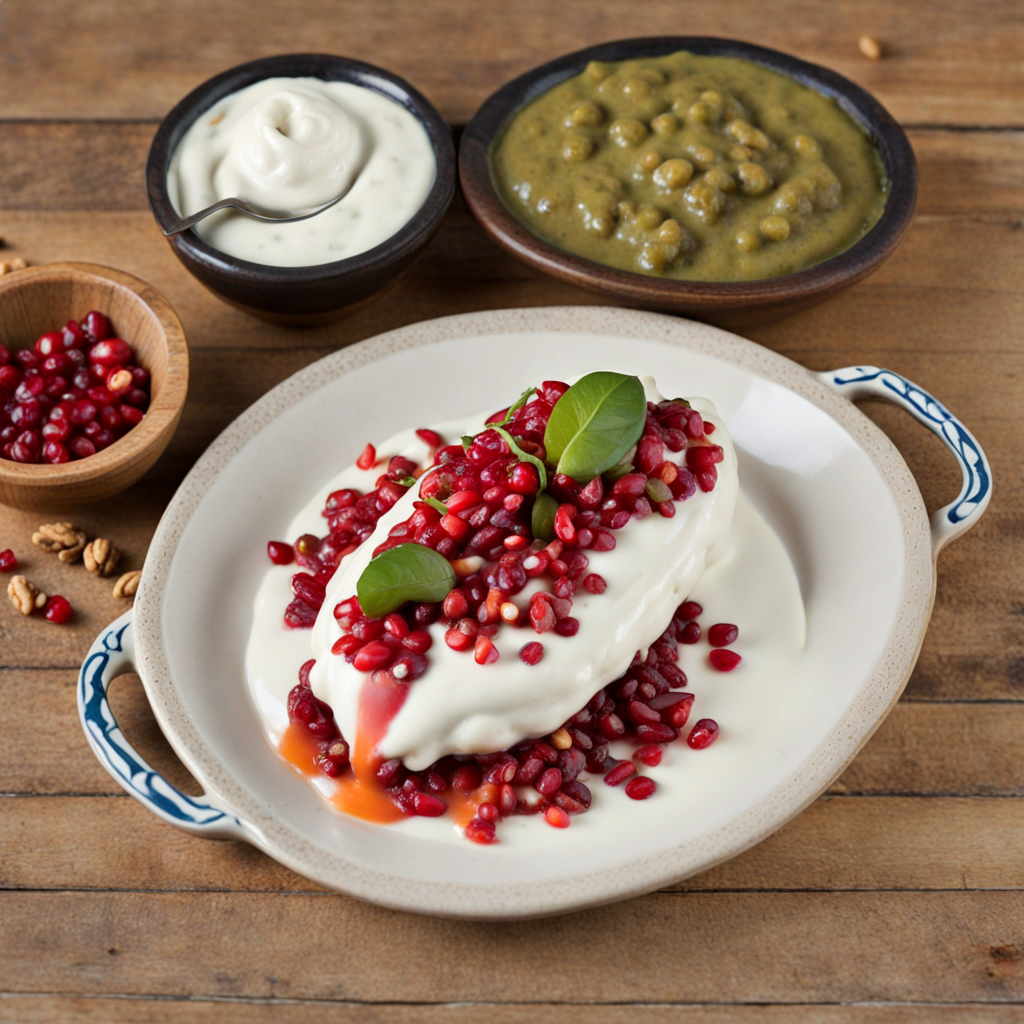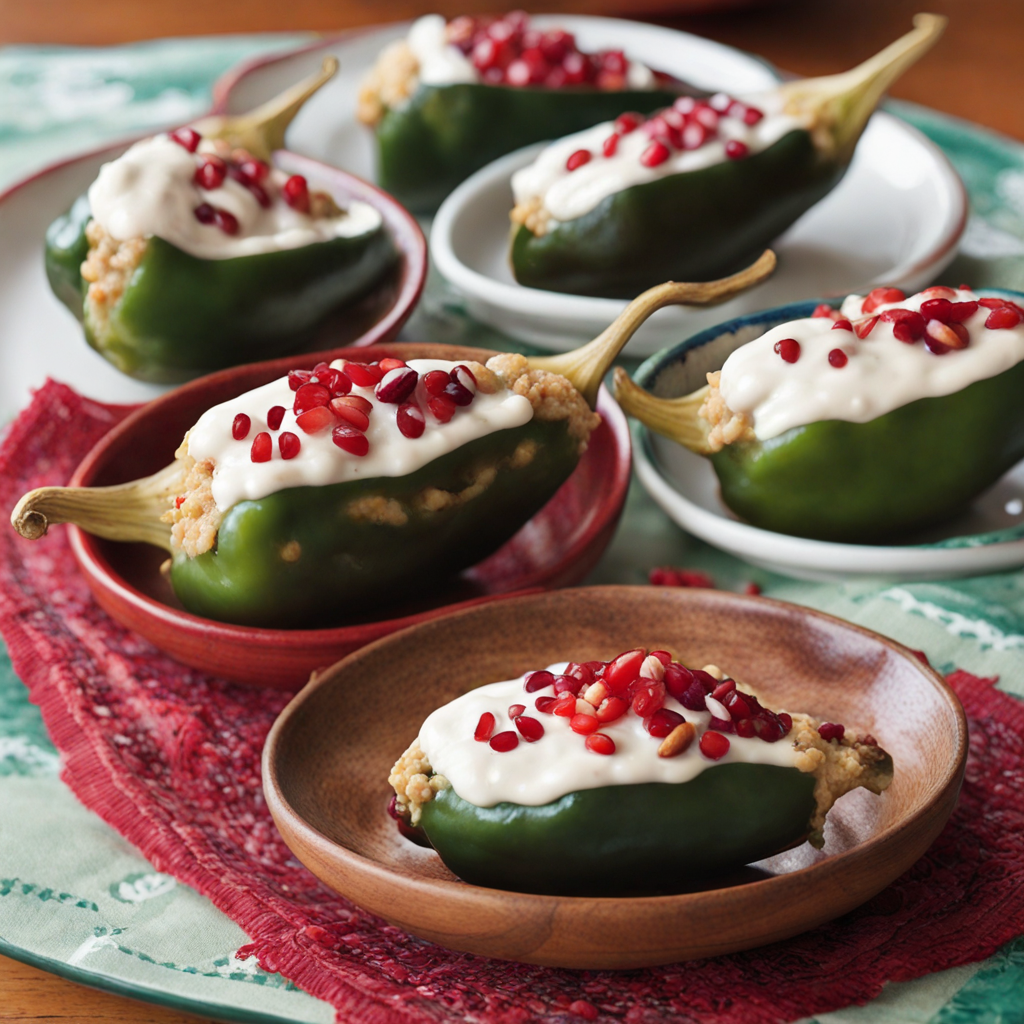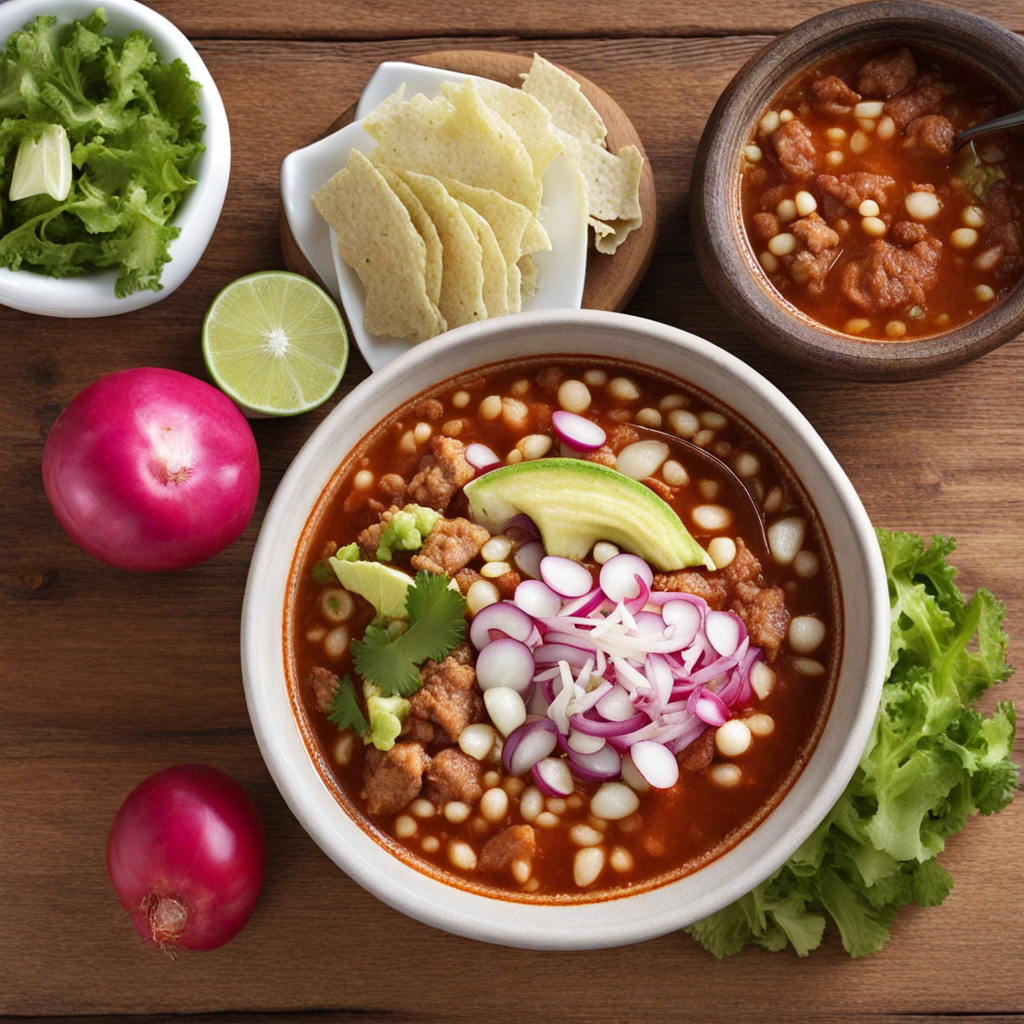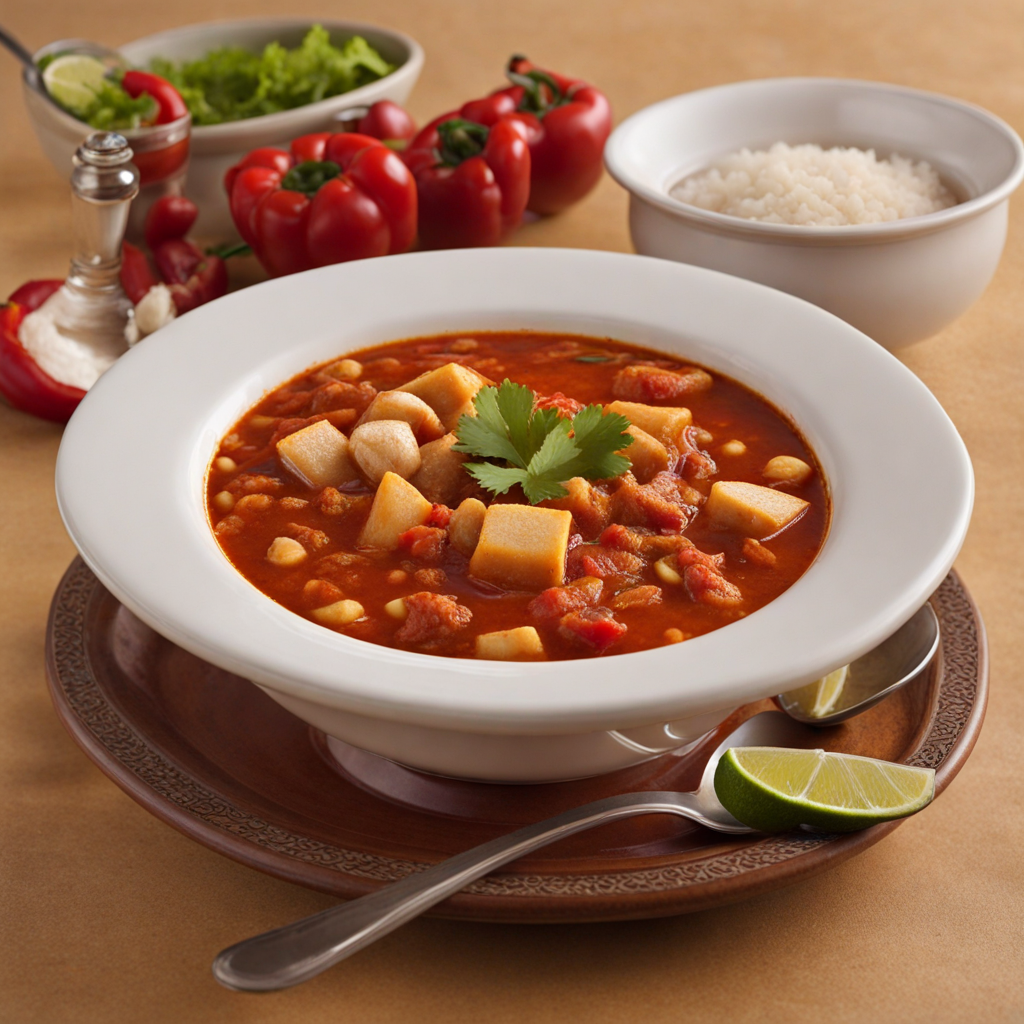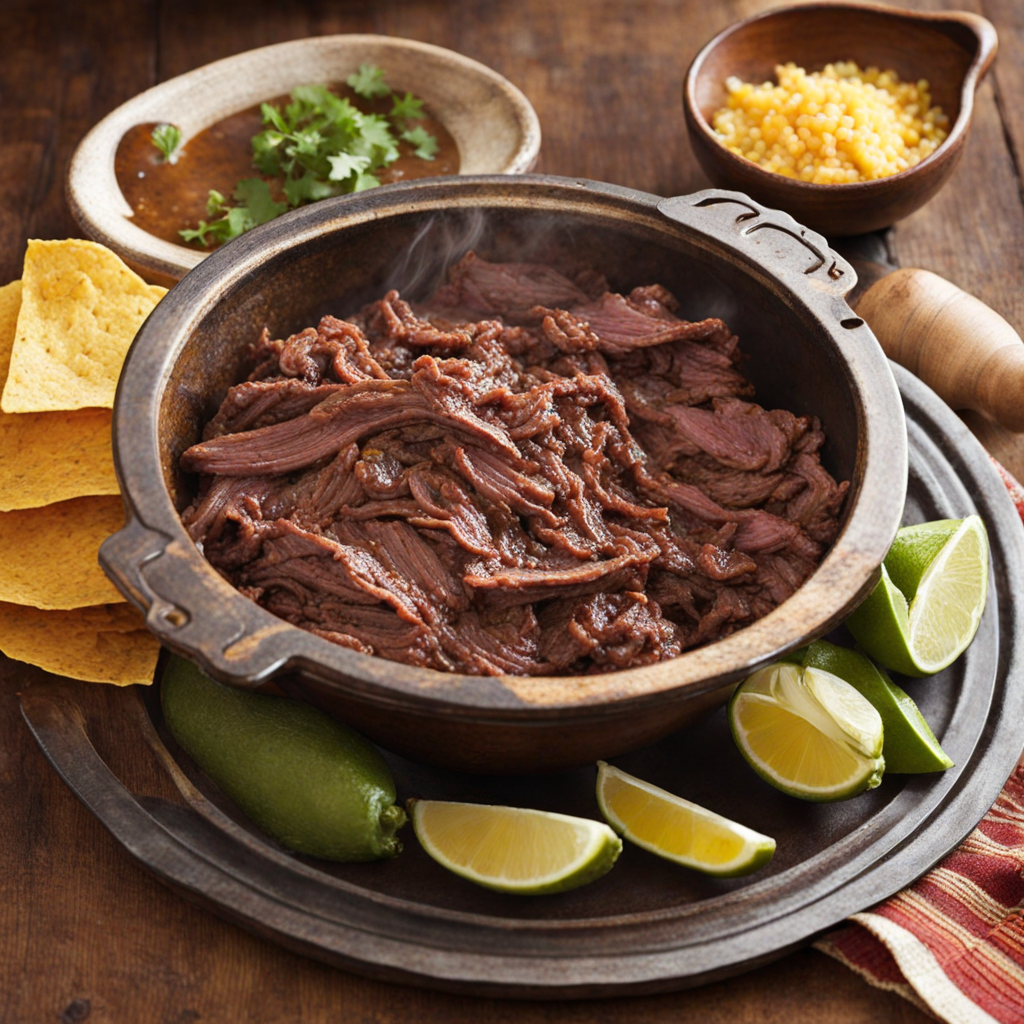Chiles en Nogada
Chiles en Nogada is a vibrant and festive dish that epitomizes the rich culinary traditions of Mexico. This dish features poblano peppers that are roasted to perfection, then stuffed with a savory filling made from ground meat, typically a blend of pork and beef, mixed with a medley of fruits, nuts, and spices. The filling is sweet and savory, featuring ingredients like apples, peaches, and plantains, which create a delightful contrast to the heat of the chiles. Each bite offers a burst of flavor, showcasing the balance of sweet and spicy that is characteristic of Mexican cuisine. Once stuffed, the chiles are bathed in a luxurious nogada sauce made from walnuts, which gives the dish its name. The sauce is creamy and nutty, with a hint of sweetness that complements the savory filling perfectly. Traditionally, the walnuts are blended with milk, sugar, and cinnamon, creating a luscious topping that is as visually appealing as it is delicious. The dish is often garnished with pomegranate seeds, adding a pop of color and a refreshing tartness that balances the richness of the sauce. Chiles en Nogada is not just a meal; it is a celebration of flavors and heritage. Traditionally served during the Mexican Independence Day festivities in September, this dish is deeply rooted in history, symbolizing the colors of the Mexican flag with its green chiles, white sauce, and red pomegranate seeds. Each element brings together the essence of Mexican culture, making Chiles en Nogada a must-try for anyone looking to explore the depth and diversity of Mexican gastronomy.
How It Became This Dish
Chiles en Nogada: A Culinary Symphony of Mexico Chiles en nogada is a dish that is often regarded as one of Mexico’s culinary masterpieces, a vibrant and flavorful representation of the nation’s rich history, culture, and regional diversity. The dish consists of poblano peppers stuffed with a picadillo—a mixture of meat, fruits, nuts, and spices—topped with a creamy walnut sauce (nogada) and sprinkled with pomegranate seeds. Its origins, cultural significance, and evolution over time provide a fascinating glimpse into Mexican gastronomy and identity. #### Origins: A Dish Born from History and Tradition The origins of chiles en nogada can be traced back to the early 19th century, during the time of Mexican independence. The dish is believed to have been created in 1821 by the nuns of the Santa Monica convent in Puebla, a city renowned for its culinary delights. According to popular legend, the nuns prepared this special dish to honor the visiting Agustín de Iturbide, a key figure in Mexico's fight for independence and the first emperor of Mexico. The colors of the dish—green from the poblano peppers, white from the nogada sauce, and red from the pomegranate seeds—symbolically represent the colors of the Mexican flag, making it a fitting tribute to the nation’s newly found independence. The use of poblano peppers, which are native to the region, along with a filling that showcases local ingredients, reflects the blending of indigenous and Spanish culinary traditions. The picadillo filling, typically made from shredded meat (usually pork or beef), combined with fruits such as apples, pears, and plantains, showcases the Spanish influence while also embracing local produce. The incorporation of nuts, particularly walnuts, highlights the agricultural bounty of Mexico, particularly in the Puebla region, where walnuts thrive. #### Cultural Significance: A Symbol of National Identity Chiles en nogada is more than just a dish; it occupies a significant place in Mexican cultural identity. The timing of its preparation is particularly noteworthy; it is traditionally served during the months of August and September when the pomegranates are in season and the harvest is abundant. This seasonal availability ties the dish to the agricultural calendar and the celebration of Mexico's independence, which is commemorated on September 16th. As a dish associated with national pride, chiles en nogada has become a staple in Mexican cuisine, especially during Independence Day celebrations. It embodies the spirit of unity and the diverse cultural influences that have shaped Mexico over the centuries. The dish is often prepared in homes and served at gatherings, fostering a sense of connection and tradition among families and communities. The preparation of chiles en nogada is also steeped in ritual. Many families have their own recipes, passed down through generations, which creates a sense of nostalgia and belonging. The act of cooking chiles en nogada often involves collaboration among family members, reinforcing social bonds and celebrating shared heritage. #### Development Over Time: Adaptations and Variations Throughout the years, chiles en nogada has undergone various adaptations, reflecting changes in culinary trends and the availability of ingredients. While the traditional recipe remains popular, modern interpretations have emerged that cater to contemporary tastes and dietary preferences. For example, some variations use different types of meat or even vegetarian fillings, such as mushrooms or lentils, to accommodate diverse palates. The nogada sauce, while typically made from walnuts, can also be adapted to include other nuts or even dairy alternatives, making it accessible to those with dietary restrictions. The use of spices in the picadillo filling can also be adjusted, with some chefs opting for more adventurous flavor profiles that incorporate regional ingredients like mole or local herbs. In recent years, there has been a resurgence of interest in traditional Mexican cuisine, fueled by culinary tourism and a growing appreciation for the country’s gastronomic heritage. Chefs and home cooks alike are revisiting classic recipes and experimenting with them in creative ways. This renaissance has resulted in a wider recognition of chiles en nogada, both within Mexico and abroad. Additionally, the dish has gained international acclaim, finding its way onto menus in fine dining establishments. Chefs often highlight the dish's historical significance and use it as a canvas to showcase their culinary skills and creativity. This trend has not only elevated the status of chiles en nogada but has also contributed to the ongoing conversation about the importance of preserving traditional recipes while embracing innovation. #### Conclusion: A Legacy of Flavor and Identity Chiles en nogada stands as a testament to the rich tapestry of Mexican history and culture. Its origins in the early 19th century, combined with its symbolic representation of national pride, underscore its place in the hearts and kitchens of many Mexicans. The dish is more than just a meal; it is a celebration of heritage, community, and identity. As chiles en nogada continues to evolve, it remains deeply rooted in the traditions that brought it to life. With each bite, one can taste the layers of history, the blending of cultures, and the enduring spirit of a nation that cherishes its culinary legacy. Whether served at festive gatherings or prepared in quiet kitchens, chiles en nogada is a dish that encapsulates the essence of Mexico—a country rich in flavors, stories, and a profound sense of belonging. In an ever-changing world, chiles en nogada serves as a delicious reminder of the past, a dish that connects generations, and a celebration of the vibrant tapestry of Mexican culture.
You may like
Discover local flavors from Mexico


